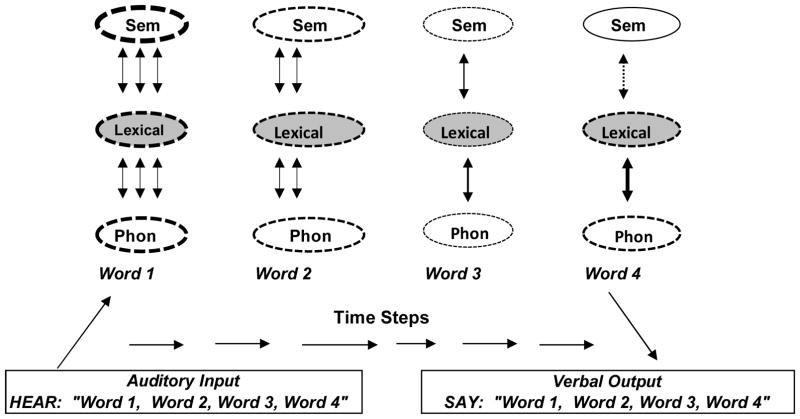Figure 2.
Depiction of hypothesized activation of semantic, lexical and phonological representations of four words in a sequence in serial recall, at the point the words are retrieved for production. Dashed borders of semantic, lexical and phonological representations indicate their activation. The thickness of the dashed lines is intended to reflect the relative strength of that activation, which is hypothesized to increase as more time passes and interactive activation process have had more time to build the activation strength of a representation. The number and weight of arrows between the semantic, phonological and lexical representations is also related to the relative strength of each word’s activation level as time passes. Words that are activated early in the sequence receive more activation through feedforward-feedback activation as time passes and the sequence is encoded in short-term memory.

